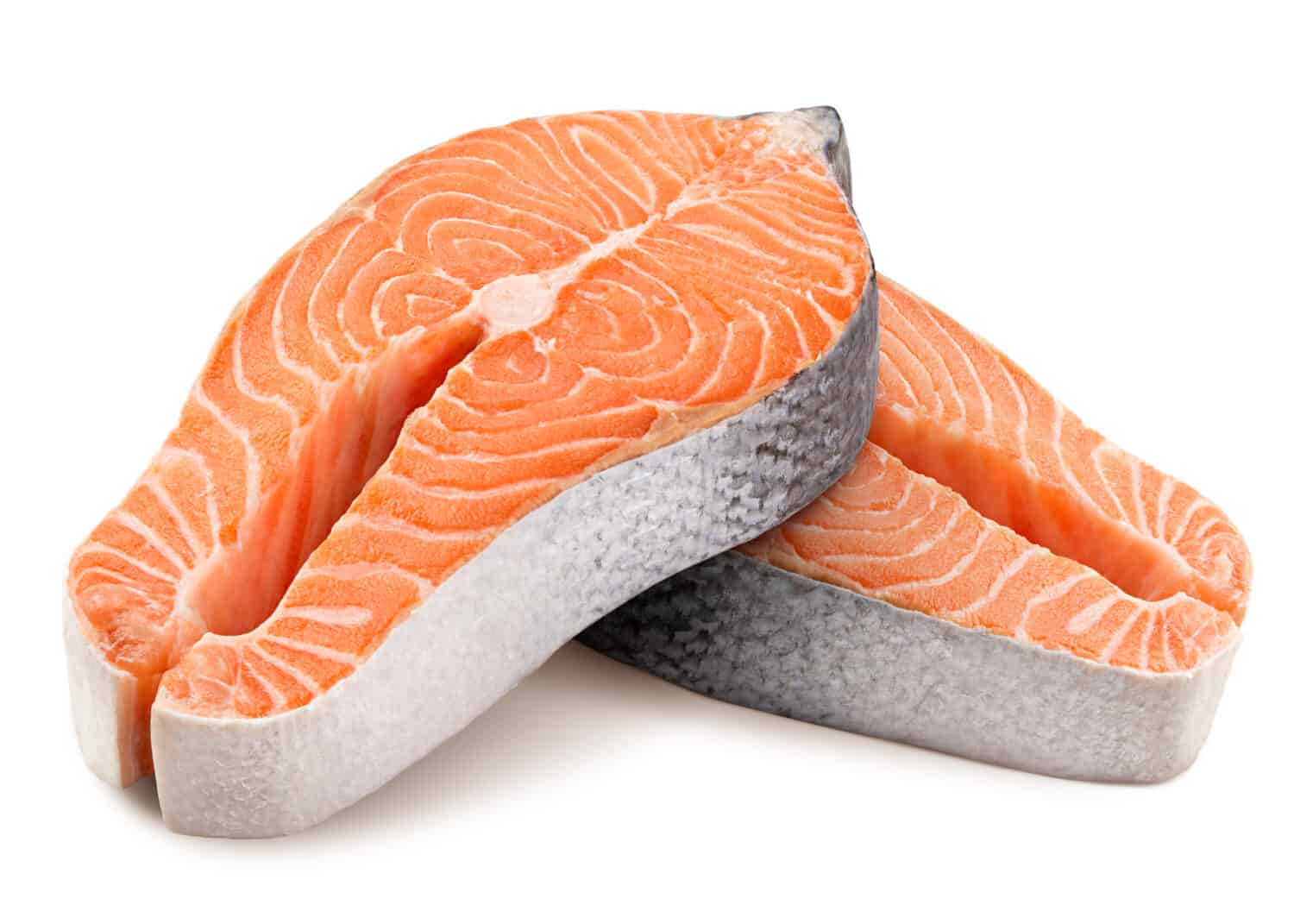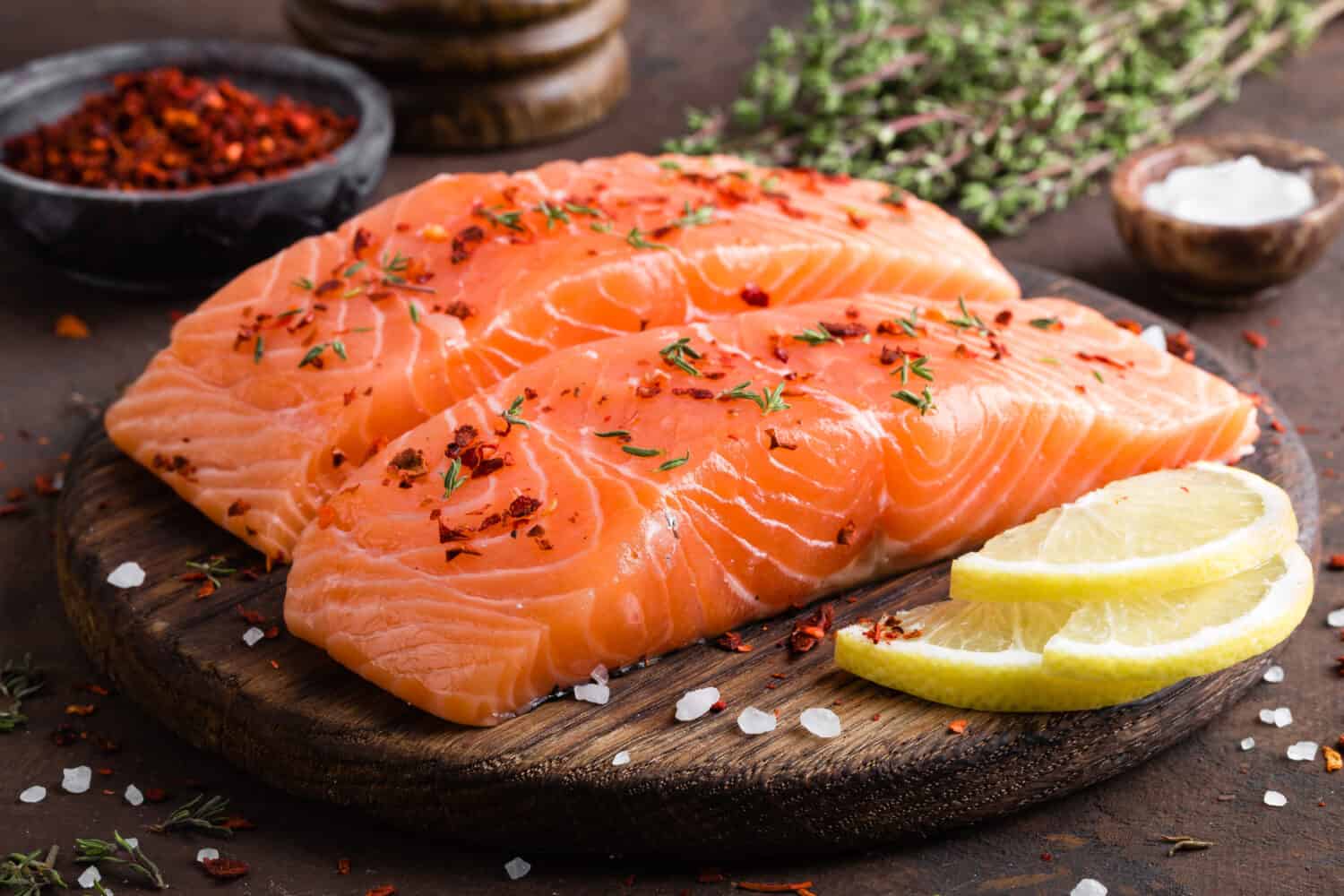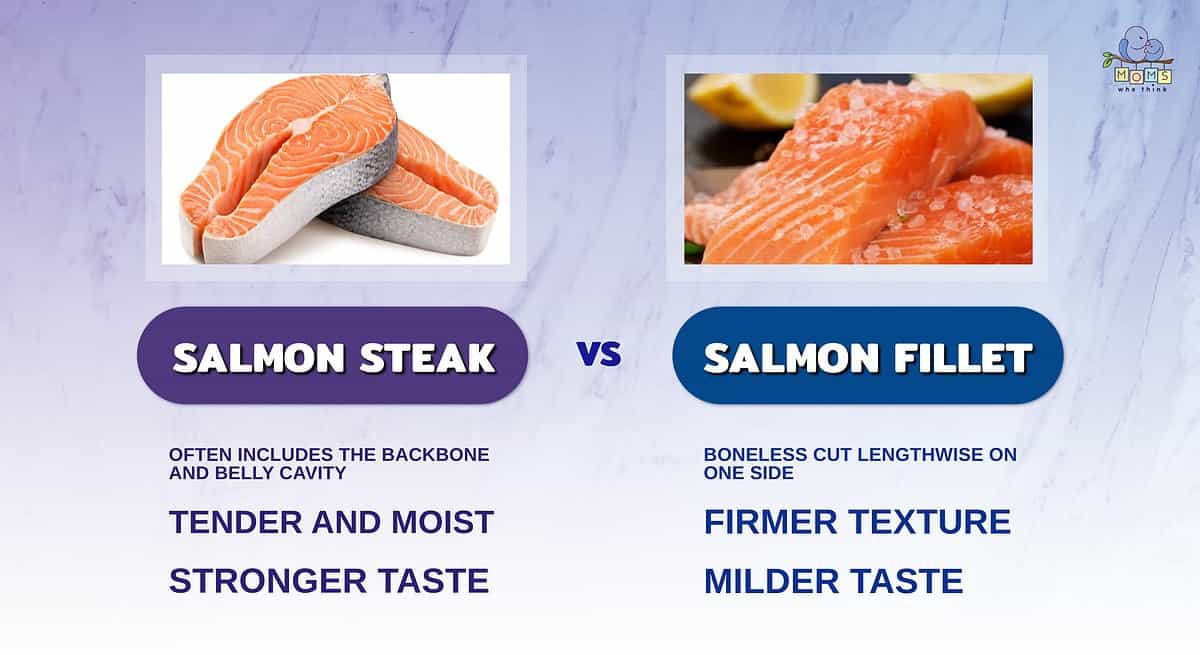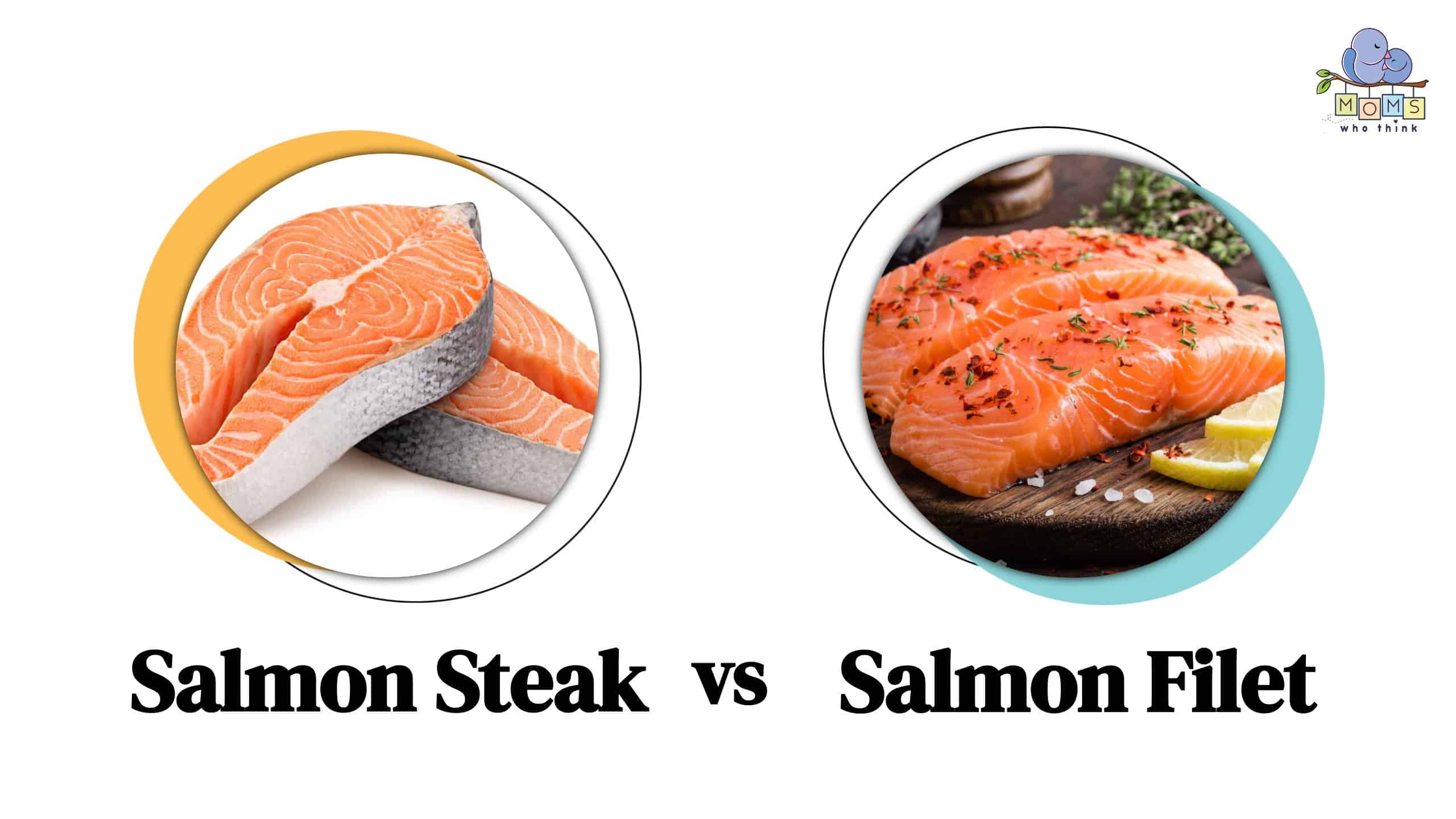Salmon steak vs. fillet is the two most common cuts of the salmon. But have you ever wondered what their differences are? You are not alone! There are a few key differences between the two, along with similarities as well. The main differences between the two are the texture and appearance, which are caused by how the fish is cut.
Whether you are an expert cook or a beginner, read on to discover what sets these two cuts of salmon apart!
- The must-have convenient reference guide for every home cook!
- Includes more than 8,000 substitutions for ingredients, cookware, and techniques.
- Save time and money on by avoiding trips to grab that "missing" ingredient you don't really need.
Salmon Steak vs. Fillet: What Are the Key Differences?
The primary difference between salmon steak and filets is where they're cut from the fish. Salmon steaks are a cross-section that often includes the backbone and belly cavity while salmon filets are boneless cuts lengthwise on one side from the spine.
Salmon steaks include both the fatter and leaner parts of the fish whereas salmon fillets are prized for their ease of cooking. Let's explore these differences in more detail below:
- Tenderness and taste: Salmon steaks are tender and moist; the bone provides the meat with a faintly stronger richness to the taste. The fillet has a firmer texture with a milder taste.
- Size and cut: A salmon steak is cut vertically to the spine, while a fillet is cut parallel to either side of the spine, making the fillet smaller than the steak.
- Convenience: Salmon steak is easier and faster to make, while fillet takes more time and effort to make because the meat easily falls apart.

Salmon steak is a cut of salmon that includes the bone and surrounding skin, which adds flavor and nutrition to the dish.
©grey_and/Shutterstock.com
What is Salmon Steak?
Salmon steak is a delicious cut of salmon that includes the bone and surrounding skin. It is known for its rich flavor and tender texture. The steak is usually about an inch thick, and you can grill, bake, or pan-sear this cut. It is very nutritious; it contains omega-3 fatty acids, minerals, and vitamins, making it a great option to include in many diets.
Cooking Methods
Grilling and pan-searing are the most common ways to cook salmon steak. Grilling salmon steak seals in the moisture and flavor of the fish with high heat, creating a tender and juicy dish. It also adds a nice smoky flavor to the salmon, improving its original flavor.
Pan-searing creates a crispy layer on the outside of the fish while keeping the inside flaky and tender. It's a quick and easy method that doesn't require much preparation, making it convenient for busy nights. You can also season the salmon to your liking when you pan-sear it.
What is a Salmon Fillet?
Salmon fillet is a popular seafood dish that is known for its firm, flaxy texture and delicious flavor. It is cut from the side of the dish and does not include the bone, which makes it easier to prepare and serve. You can cook fillets in a variety of different ways, including baking, grilling, pan-searing, or broiling. Similar to salmon steak, a fillet is also a nutritious dish that contains omega-3 fatty acids, minerals, and vitamins.
Cooking Methods

Salmon fillet is a popular seafood dish known for its firm, flaky texture and delicious flavor.
©Sea Wave/Shutterstock.com
The two most popular ways to cook fillet are grilling and baking. Grilling can give the fish a smoky flavor, but taking it off the grill too soon can make it stick. Despite this, grilling is a healthier option because it doesn't require extra oils or fats.
Baking a fillet is a simple way to cook it, resulting in a tender and flaky texture. To bake it, add your preferred seasoning and place it in the oven. It's very convenient because you don't have to watch it constantly. Baking the fish is also a healthy choice because you don't need to add extra oils or fats.
Similarities Between Salmon Steak and Fillet
Salmon is a fish that is enjoyed worldwide, and the two most common cuts are salmon steak and fillet. These cuts share some similarities despite their differences in appearance, tenderness, and taste. Let's take a look at their similarities!
- Cuts: Salmon steak and fillet both come from the same fish.
- Nutrition: Both are rich in omega-3 fatty acids, which are essential for your health.
- Versatility: These cuts of salmon can be cooked in various ways, including baking, broiling, grilling, and pan-searing.
- Protein: You can get a high amount of protein from eating either cut.
- The must-have convenient reference guide for every home cook!
- Includes more than 8,000 substitutions for ingredients, cookware, and techniques.
- Save time and money on by avoiding trips to grab that "missing" ingredient you don't really need.
Recipes
PrintSucculent Herb Crusted Salmon
- Yield: 4 servings
Ingredients
1 1/2 cups soft bread crumbs
2 Tablespoons minced fresh parsley
1 Tablespoon minced fresh thyme or 1 teaspoon dried thyme
2 garlic cloves, minced
1 teaspoon grated lemon peel
1/2 teaspoon salt
1/2 teaspoon lemon pepper seasoning
1/2 teaspoon paprika
4 salmon fillets (6 ounces each)
Refrigerated butter flavored spray
Instructions
1. In a large bowl, combine everything but the salmon and set aside.
2. Pat salmon dry. Place skin side down, in a 13×9 inch baking dish coated with cooking spray.
3. Evenly spray salmon with butter flavored spray. Cover salmon with crumb mixture.
4. Evenly spray crumbs with butter flavored spray.
5. Bake, uncovered, at 350° for 15 minutes or until fish flakes easily with a fork.
Nutrition
- Serving Size: One fillet
- Calories: 371
- Sodium: 525mg
- Fat: 19g
- Saturated Fat: 4g
- Carbohydrates: 12g
- Fiber: 1g
- Protein: 36g
- Cholesterol: 113mg
Final Thoughts

- Salmon steak is a different cut than a salmon fillet. Salmon steak often includes the backbone and belly cavity, while a salmon fillet is boneless and cut lengthwise along the spine.
- A salmon steak is more tender and moist than a fillet.
- The taste of a salmon fillet is milder than that of a steak, meaning that more care should be taken when seasoning it.
Whether you prefer salmon steak or fillet, both cuts offer a delicious and nutritious meal loaded with nutrients and minerals. While the texture and appearance of the cuts differ, they share similarities in their versatility and nutritional value. Understanding the differences between the two can help you choose the best option for your dinner and the best cooking method to give your salmon the mouth-watering texture you desire!


